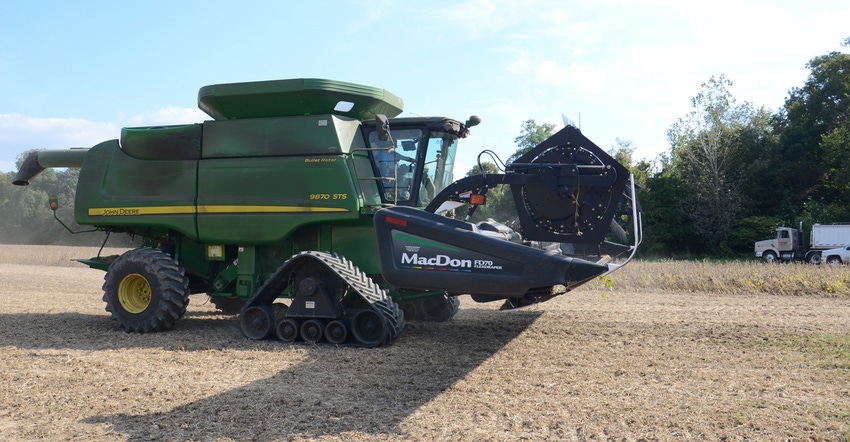
We could rent a second combine at a reasonable rate for fall. How much we pay depends on separator hours. Should we just rent for beans? We can support two combines for corn, but getting corn out of the field isn’t critical. How do the economics of leasing a second combine pencil out compared to trading for one bigger combine?
The Profit Panel members answering this question includes: David Erickson, farmer, Altona, Ill.; Mark Evans, Purdue University Extension, Putnam County, Ind.; Steve Myers, Busey Ag Resources, Leroy, Ill.; and Chris Parker, hay and livestock producer, Morgantown, Ind.
Erickson: You’ve identified several of the key considerations facing you for your combine decision, but finding the single best answer will be more difficult. The advantages of renting a combine are full deductibility of rental costs and elimination of repair and maintenance costs. Using a rental combine for more hours than what is needed to supplement your owned combine does shorten harvesttime, but increases your overall costs. Owning a larger combine could be less expensive if you use it for enough hours on an annual basis to lower the investment on a per-acre basis. Since it appears you have not tried any of these options, I would suggest you consider renting an additional combine to harvest soybeans. Then evaluate your costs and timeliness based on your actual experience.
Evans: A decision to add a combine to an operation is typically a much bigger deal financially in terms of the entire logistics than it is to the specifics of the cost-benefit breakdown of leasing or buying the machine. You can also throw buying new compared to preowned into the equation. While capacity may be available, what about personnel? Too often folks don’t equally consider enough of the labor costs in production while focusing heavily on equipment costs. Plus, getting corn out of the field may be more critical than you think, depending upon the year.
Currently, interest rates are favorable compared to long term and seem to be trending up. Considering repairs, lack of control with a lease and so forth, it seems a newer, bigger machine would likely be the better bet. Last year several farmers found themselves upside-down with a machine purchased a couple of years back when commodity prices were good. With lackluster commodity prices, equipment demand is soft, which should play more favorably for equipment costs.
Myers: I suggest two columns to sort out itemizing the leased combine vs. trading up as it relates to fixed and variable costs on a per-acre basis. That establishes a bottom line so you can determine what impact added efficiency will have. Spread fixed costs for the bigger machine across all your acres, not just soybean harvest. Run the numbers.
Parker: I certainly am not qualified to give you an economic breakdown comparison on leasing a second combine vs. purchase of one larger, new combine. I would study the “DIRTI 5” we learned in economic classes: depreciation, interest, repairs, taxes and insurance. In particular, repairs on an older combine or two as opposed to a new combine seems of particular importance. Downtime during harvest is very costly and extremely frustrating. Are you certain you have the capacity and manpower to support two machines? If so and you rent a combine, to me it would make sense to utilize it for both crops.

About the Author(s)
You May Also Like




